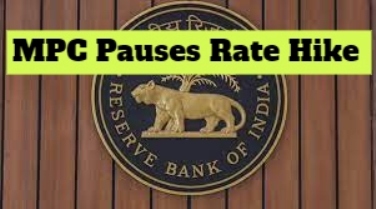

By Linus Garg
First publised on 2023-04-07 07:20:24
The
Monetary Policy Committee (MPC) of the RBI, in a unanimous decision, has
decided to maintain status quo on keep policy rates in its bi-monthly review
meeting in April. The RBI explained that the decision was a 'pause' and not a 'pivot' as the bank studies the impact of continuous rate hikes for the last 5
such meetings. Since it is well-established that policy rate hikes by Central
banks take effect after a lag, it is good that the apex bank has decided to
pause the hikes despite inflation not being controlled and global economic and
geopolitical situation being uncertain. It surprised the financial markets as
everyone was expecting another 25 bps hike this time.
RBI
governor Shaktikanta Das said that the war against inflation will continue
until there is a decline that is durable and the level is closer to the target.
He said that "inflation has softened from its elevated levels a year ago,
however, it still remains above the upper tolerance band." He further said that "at this stage, we remain watchful of the evolving outlook and the impact of
our actions during the past one year on the broader real economy." While
warning against the effects of unseasonal rains, Das was upbeat due to
moderation in commodity prices and the resilience of the economy to predict a
growth of 7% in FY23 while the RBI marginally revised the growth projection for
the current year from 6.4% to 6.5%.
Although
the MPC decision to pause rate hikes is welcome, its future action will depend
on how the inflationary pressures pan out. If oil and commodity prices remain
stable or ease in future and if the expectation of a record rabi harvest holds
true, price pressures may ease and inflation might come within RBI's tolerance
band in the second or third quarter of FY23. Then, the need to hike rates will
also diminish. Otherwise, future rate hikes cannot be ruled out.











